Now that you've purchased a new gazebo, the first thing you need to do is learn how it's set up and dismantled. In this how-to guide let the BCFing experts explain the process and help you to make the most of your new gazebo. We'll also run through how to keep your gazebo secure and some handy hints on gazebo maintenance for extending the life expectancy of your sun shelter or beach shade.
The process of setting up or erecting a gazebo is a straightforward task and one that becomes easier the more practice you have, but when you are trying it for the first time you may find it daunting. It's important that the correct steps are taken to ensure the gazebo goes up easily and prevents any damage. To make the process even easier, we recommend at least 2 people assist in the assembly. As it's not advised to use your gazebo during weather conditions such as strong wind or heavy rain, we also recommend assessing the conditions to identify if it's suitable before you begin, and then ensure the pegs you have are capable of keeping the unit secure – this will help to eliminate the risk of injury to yourself and others while also preventing damage to the gazebo.
-
Choose location
Before you even touch your gazebo, it's important to choose an appropriate location for it. Look for an even space free from obstacles and trip hazards, and use a shovel if need be to flatten the area. It can also be helpful to lay the parts in order to ensure everything is easily accessible. Most gazebos also come standard with a handy instruction manual complete with detailed images.
-
Unfold the frame
Begin by getting each person to stand on opposite corners of the gazebo and firmly grasp a leg each. Slightly lift the frame off the ground and slowly take a few steps backwards, stopping at full arm's length when the frame is partially opened. Do not completely open the gazebo frame as it will make it harder to fit the canopy.
-
Set up canopy
Place the main canopy evenly over the top frame before fixing each corner into position. Use the Velcro pads to secure each corner of the canopy to the frame under the plastic leg caps. This is installed while the frame is only partially widened to give you room to work and to prevent stretching the fabric.
-
Extend the frame
Each person should then grasp the bottom of the middle cross beam, lifting it slightly as they continue to slowly walk backwards until the frame is fully extended. Ensure the top is straight and fitted correctly before you finish extending the frame. Be careful not to pinch your fingers, and try to avoid applying too much pressure to the frame as it may result in bent cross beams.
-
Lock the frame
In order to lock the frame in place you must begin by engaging the slider at each corner. Push up the slider with one hand while holding down the top of the leg with the other until it locks into place. Repeat this for the rest of the corners.
-
Adjust the legs
You can now set the adjustable legs to your desired height by gently pulling out the inner leg until the spring-loaded snap button pops into position. Repeat the process for each leg and make sure they're at the same height. On most compact gazebos, you will have 3 height levels to choose between.
-
Peg it down
Now peg down the gazebo. Using the pegs provided, drive one into the hole on the base of each foot. This will keep the gazebo secure and stop it from moving sideways in the event of wild weather and prevent any accidents from occurring. If you plan on using it at the beach or on softer soil, you may require different pegs to hold it in place.
-
Make sure it's stable
Added stability can also be provided using guy ropes which come standard with your gazebo. They should be positioned at a 45-degree angle to your gazebo with adequate tension and the correct anchors or pegs.
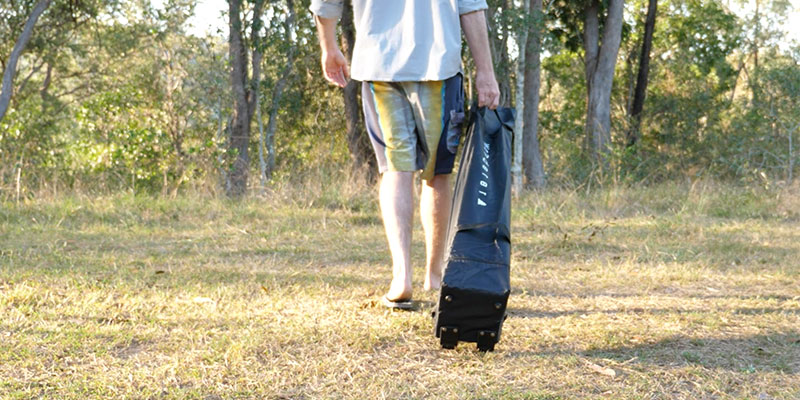
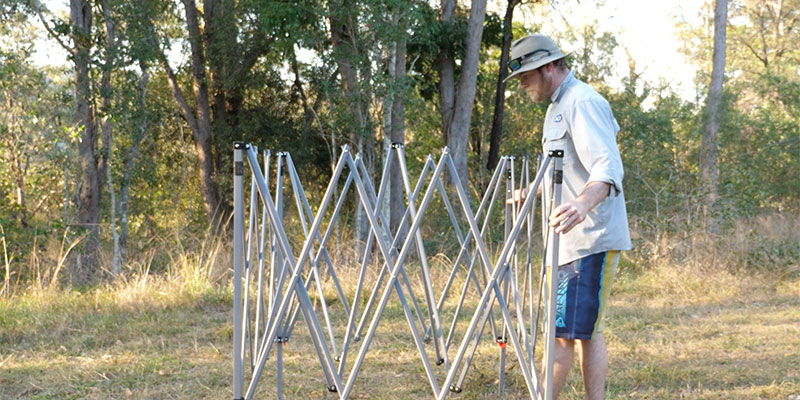
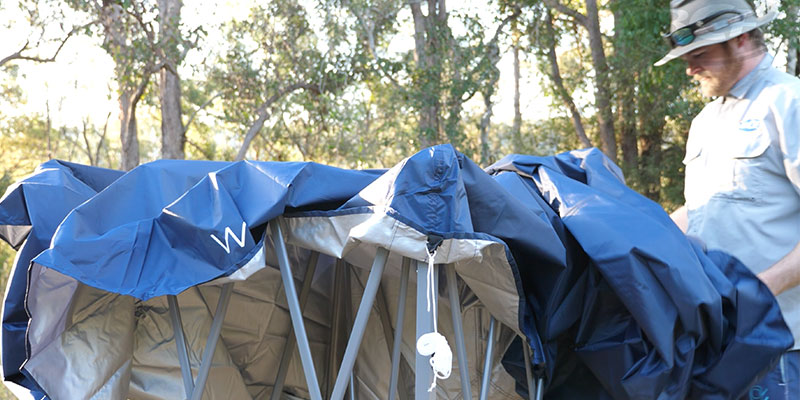
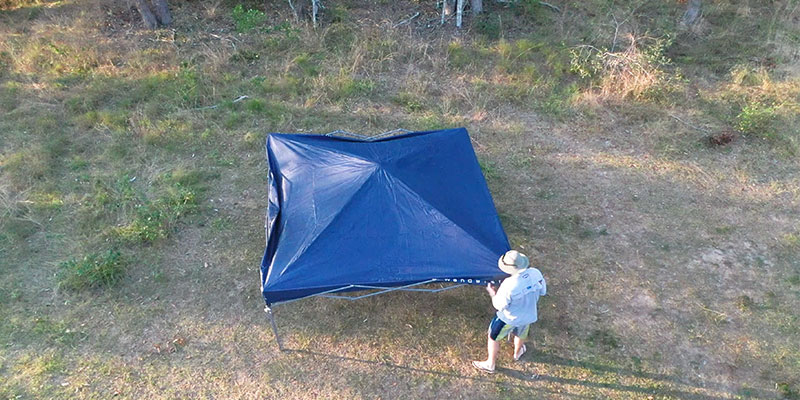
For added stability and peace of mind, it's important to attach the strap around the lowest point of the beam with aid of the included clip.
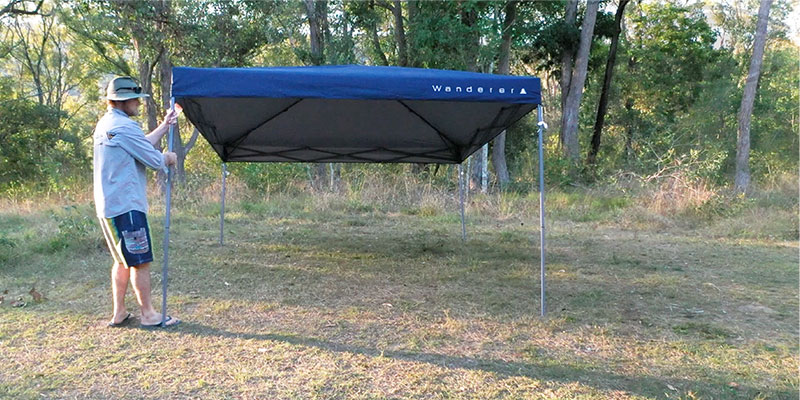
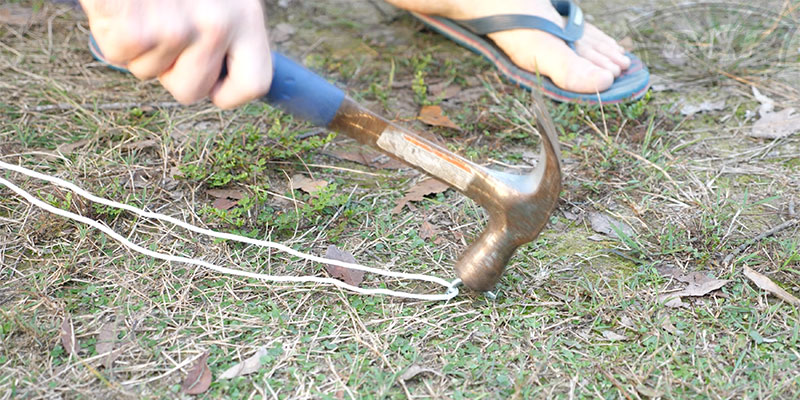
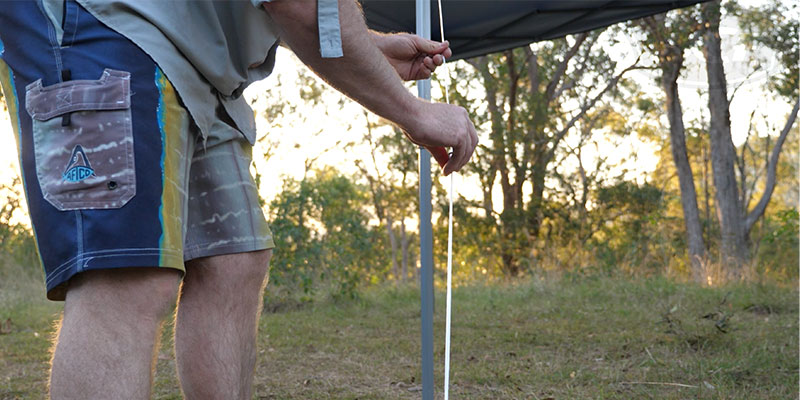
Dismantling Your Gazebo
The process of dismantling a gazebo is very quick and easy, using similar steps to how it was assembled but in reverse. Begin by removing any weights or guy ropes and pegs you may have used to secure your gazebo, then lower the frame by pushing the height adjusters in on each leg, which will restore it to its minimum height. Now using the push-button mechanism atop each leg, disengage and begin to slowly walk the frame inwards until it has fully collapsed. Place the frame and canopy top into the storage bag provided after ensuring everything is dry and free from sand and dirt.
Safety Precautions for Setting Up a Gazebo
- The gazebo has been designed as a sun shelter only, and as such, they should not be used during weather events such as wind or rain. Wind and rain may cause damage to the gazebo and can also result in injuries to yourself and others.
- It's preferred that when choosing a location to set up your gazebo, you remain 1.5m from all overhead obstructions such as powerlines and trees.
- Gazebos are designed for temporary use; they should not be left standing for any extended length of time and be dismantled after each outing.
- The use of sandbags or frame weights in conjunction with guy ropes and pegs will be the best option for keeping your gazebo secure. It's crucial to use these items every time the gazebo is up to minimise the effects of wind gusts.
- All flame and heat sources should be kept at a distance from the gazebo as constant exposure will burn the fabric. Never build fires under the canopy top.
- It's required that a minimum of two people assist in the process of setting up the gazebo. Ensure all children keep well clear while setup is underway.
- The included utility hook has been provided for hanging small objects and should not hold anything heavier than 2kg.
How do you keep your gazebo secure on the sand?
When using your gazebo on the sand, we recommend using a combination of pegs, guy ropes and weights such as sandbags or frame weights to provide added stability. Hint: use the holes in the feet to secure your gazebo with extra pegs.
Handy Hints for Maintaining Your Gazebo
- To extend the life expectancy of your gazebo and, in particular, the canopy top, we recommend that the top is removed and stored in the separate pocket provided. This will prevent unnecessary wear and tear caused by the material being pinched and stretched by the struts.
- Ensure all surfaces are wiped down with a mild soapy solution after each use. If it has been used at the beach or river where salt and moisture is common, it's important to treat all metal components (such as zips) with a silicone spray and allow them to dry before being packed away. Bleach or solvents should always be avoided.
- The gazebo frame should be inspected frequently to ensure all nuts and bolts are tight and secure.
- Always return the gazebo to the carry bag provided.

